Molecular imaging with optics: primer and case for near-infrared fluorescence techniques in personalized medicine
- PMID: 19021311
- PMCID: PMC2915929
- DOI: 10.1117/1.2953185
Molecular imaging with optics: primer and case for near-infrared fluorescence techniques in personalized medicine
Abstract
We compare and contrast the development of optical molecular imaging techniques with nuclear medicine with a didactic emphasis for initiating readers into the field of molecular imaging. The nuclear imaging techniques of gamma scintigraphy, single-photon emission computed tomography, and positron emission tomography are first briefly reviewed. The molecular optical imaging techniques of bioluminescence and fluorescence using gene reporter/probes and gene reporters are described prior to introducing the governing factors of autofluorescence and excitation light leakage. The use of dual-labeled, near-infrared excitable and radio-labeled agents are described with comparative measurements between planar fluorescence and nuclear molecular imaging. The concept of time-independent and -dependent measurements is described with emphasis on integrating time-dependent measurements made in the frequency domain for 3-D tomography. Finally, we comment on the challenges and progress for translating near-infrared (NIR) molecular imaging agents for personalized medicine.
Figures











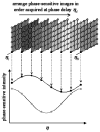


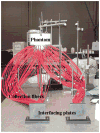

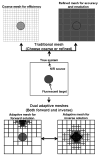
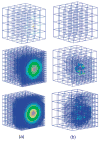
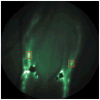
Similar articles
-
Dual optical and nuclear imaging in human melanoma xenografts using a single targeted imaging probe.Nucl Med Biol. 2006 Apr;33(3):349-58. doi: 10.1016/j.nucmedbio.2006.01.001. Nucl Med Biol. 2006. PMID: 16631083
-
Quality analysis of in vivo near-infrared fluorescence and conventional gamma images acquired using a dual-labeled tumor-targeting probe.J Biomed Opt. 2005 Sep-Oct;10(5):054010. doi: 10.1117/1.2114748. J Biomed Opt. 2005. PMID: 16292970
-
Antibody vectors for imaging.Semin Nucl Med. 2010 May;40(3):167-81. doi: 10.1053/j.semnuclmed.2009.12.005. Semin Nucl Med. 2010. PMID: 20350626 Free PMC article. Review.
-
Smart optical probes for near-infrared fluorescence imaging of Alzheimer's disease pathology.Eur J Nucl Med Mol Imaging. 2008 Mar;35 Suppl 1:S93-8. doi: 10.1007/s00259-007-0708-7. Eur J Nucl Med Mol Imaging. 2008. PMID: 18236039 Review.
-
Nanoparticles for optical molecular imaging of atherosclerosis.Small. 2009 Mar;5(5):544-57. doi: 10.1002/smll.200801079. Small. 2009. PMID: 19226595 Review.
Cited by
-
Saposin C coupled lipid nanovesicles specifically target arthritic mouse joints for optical imaging of disease severity.PLoS One. 2012;7(3):e33966. doi: 10.1371/journal.pone.0033966. Epub 2012 Mar 28. PLoS One. 2012. PMID: 22470501 Free PMC article.
-
A gantry-based tri-modality system for bioluminescence tomography.Rev Sci Instrum. 2012 Apr;83(4):043708. doi: 10.1063/1.3698295. Rev Sci Instrum. 2012. PMID: 22559540 Free PMC article.
-
A brief review of cytotoxicity of nanoparticles on mesenchymal stem cells in regenerative medicine.Int J Nanomedicine. 2019 May 24;14:3875-3892. doi: 10.2147/IJN.S205574. eCollection 2019. Int J Nanomedicine. 2019. PMID: 31213807 Free PMC article. Review.
-
Temperature-modulated fluorescence tomography based on both concentration and lifetime contrast.J Biomed Opt. 2012 May;17(5):056007. doi: 10.1117/1.JBO.17.5.056007. J Biomed Opt. 2012. PMID: 22612130 Free PMC article.
-
Molecular Imaging Probe Development using Microfluidics.Curr Org Synth. 2011 Aug 1;8(4):473-487. doi: 10.2174/157017911796117205. Curr Org Synth. 2011. PMID: 22977436 Free PMC article.
References
-
- Weissleder R. Molecular imaging in cancer. Science. 2006;312(5777):1168–1171. - PubMed
-
- Herschman HR. Molecular imaging: looking at problems, seeing solutions. Science. 2003;302(5645):605–608. - PubMed
-
- Rudin M, Weissleder R. Molecular imaging in drug discovery and development. Nat Rev Drug Discovery. 2003;2(2):123–131. - PubMed
-
- Massoud TF, Gambhir SS. Molecular imaging in living subjects: seeing fundamental biological processes in a new light. Genes Dev. 2003;17(5):545–580. - PubMed
Publication types
MeSH terms
Grants and funding
LinkOut - more resources
Full Text Sources
Miscellaneous

